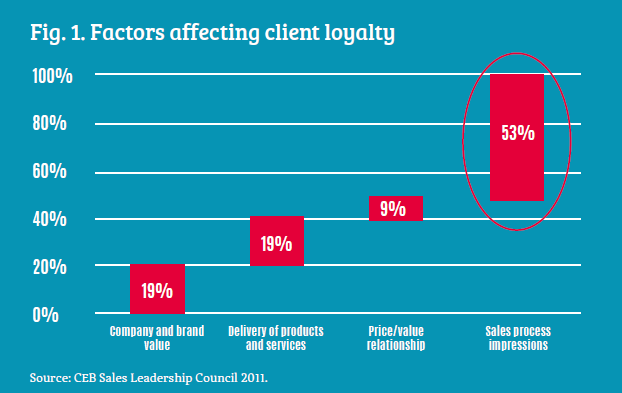Leaving a good impression
For the client, every time they contact you, your company, or meet your product or service, they are having an experience. A positive or negative impression, however short, may decide whether or not they work with you or the organisation you represent. Therefore, Customer Experience Management, i.e. the process of providing clients with unique experiences and evoking positive emotions, is playing an increasingly important role in the sales process. How can you build a competitive advantage by providing clients with unique sales experiences?
Dostępny jest przetłumaczony materiał kliknij tutaj, aby przejść do materiału.

Apple is a great example of building unforgettable customer experiences on many levels. The adventure begins at the product packaging stage - Apple’s packaging always looks special. Opening the box is to be a certain ritual and provides the customer with positive emotions. The next step is the product’s appearance, followed by the process of setting up and using the device. Another piece of the puzzle is the store, which, according to the creator of the whole concept, was supposed to be more than just a store.
One of the key elements in the process of building a unique customer experience at Apple is the service process, which is supposed to be a memorable experience. Sales activities are based on five stages which together spell ‘Apple’, and each of which is supposed to evoke positive emotions:
- Approach customers with a personalized, warm welcome .
- Probe politely to understand all the customer’s needs.
- Present a solution for the customer to take home today .
- Listen for and resolve any issues or concerns.
- End with a fond farewell and an invitation to return.
This means that a visit to the Apple Store is always a pleasant experience1.
Fighting for client loyalty
In 2011, CEB (the Corporate Executive Board) conducted an interesting study showing what influences clients’ decisions regarding working with a particular supplier. The features of products, brands, services and the price-quality ratio were considered. Issues related to the sales process itself - what it’s like to buy from a given supplier compared to the competition - were also included. The results were surprising (Fig. 1).
Wykorzystałeś swój limit bezpłatnych treści
Pozostałe 85% artykułu dostępne jest dla zalogowanych użytkowników portalu. Zaloguj się, wybierz plan abonamentowy albo kup dostęp do artykułu/dokumentu.







 Zaloguj się
Zaloguj się








